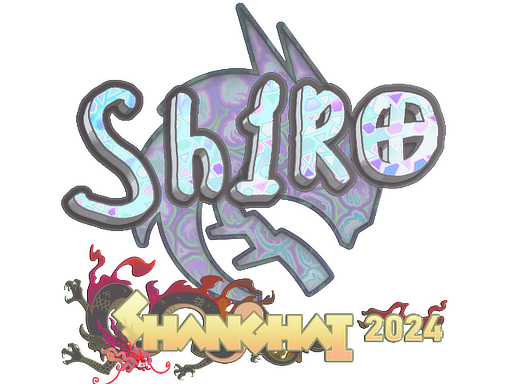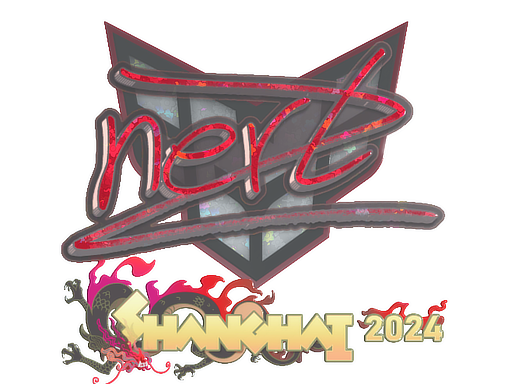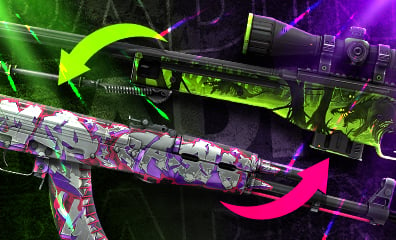Avoid Steam Scams: Simple Tips for Safe Trading in CS2
Trading CS2 skins can be both profitable and exciting, offering a path to obtain those coveted skins you’ve been eyeing. It is a venture filled with risks, with scammers constantly devising new methods to exploit traders. This article will delve into the prevalent Steam scams and provide you with essential tips to shield yourself against these deceptive practices.
Understanding CS2 Skin Trading Basics
Comprehending the fundamentals of CS2 skin trading is vital for players aiming to participate in this dynamic virtual marketplace. CS2 skins, initially conceived as mere cosmetic enhancements, have transformed into valuable digital assets.
Here’s a breakdown of the core aspects of CS2 skin trading:
- Quality Grades: Skins exhibit diverse quality grades that directly impact their appearance. These grades encompass Factory New, Minimal Wear, Field-Tested, Well-Worn and Battle-Scarred. Factory New skins are in impeccable condition, while Battle-Scarred skins display noticeable wear.
- Market Trends: Market trends and community preferences can exert substantial influence on skin values. Staying attuned to these trends can enhance your ability to execute strategic trades.
- Trading Platforms: Players can conduct skin trades directly within CS2, but external trading websites and marketplaces, such as the Steam Community Market, offer additional trading avenues. These platforms facilitate the buying, selling and trading of CS2 skins.
- Trading Procedure: Engaging in skin trading typically involves locating a willing trading partner, agreeing on the skins involved in the exchange and executing the trade. Some third-party platforms provide advanced trading capabilities, allowing users to trade multiple items simultaneously.
- Market Prices: CS2 skin prices are subject to fluctuations influenced by supply and demand, skin rarity and condition. These prices are predominantly shaped by the community and can change frequently.
- Market Fees: When selling a skin on the Steam Community Market, Valve imposes a modest fee based on the transaction amount.
- Guarding Against Scams: The CS2 skin trading community has encountered various scams and fraudulent activities. Vigilance is crucial during trading; employing secure trading practices and recognizing common scam tactics is essential.
Common Steam Scams in CS2 Skin Trading
Be cautious of these widespread Steam frauds while trading CS2 skins to safeguard yourself against potential deceit:
- Middleman Scams: Avoid trades involving a “middleman” for security, as these individuals are often in cahoots with scammers, leading to the loss of your items. Trade only with people you trust.
- Impersonation: Be wary of individuals pretending to be well-known traders or CS2 celebrities to trick you into trading or giving away items. Always confirm the trader’s identity.
- Real Money Transactions: Trading skins for real money outside approved platforms is fraught with risk. Scammers may agree to pay but fail to deliver.
- Phishing Links: Beware of messages with alluring offers or claims of winning skins, which include a link to a counterfeit Steam login page. By entering your details there, you risk account theft. Always confirm you’re on the real Steam site and check the URL carefully.
- Trade Offer Tricks: Some scammers tweak the trade offer system, making it look like they’re offering valuable items when they’re not. Review trade offers thoroughly before accepting.
- Bogus Item Verification: If asked to verify your items on a third-party site, refuse. These are often phishing sites aiming to steal your login info. Steam doesn’t require external item verification.
- Suspiciously Generous Trades: Stay alert to overly favorable offers. Scammers might offer high-value items for your skins, only to swap items at the last second.
- Overpayment Frauds: Beware of offers where someone proposes to overpay for your items, often with illegitimate or stolen Steam funds, and requests items or Steam Wallet codes as change. They may cancel the payment later. Never send items as change.
Impersonation Scams
Impersonation scams in CS2 (CS:GO) skin trading are a prevalent and sly strategy scammers use to trick players and snatch prized in-game items. They pretend to be trustworthy people or famous figures in the CS2 community, luring victims into unbalanced trades or to surrender their cherished skins.
Here’s an insight into the workings of impersonation scams:
- Copying Profiles: Scammers replicate profiles of well-known traders, CS2 celebrities or community influencers, using similar avatars, nicknames and bios to make their profiles look authentic.
- Friendship Requests: They send friend requests, posing as notable CS2 personalities or experienced traders, sometimes pretending to have exclusive trading insights.
- Trust Building: Once added, they engage in conversation, discussing CS2, skins or trades to foster a friendly rapport.
- Trade Proposals: Having established trust, scammers suggest seemingly advantageous or rare trades, offering high-value skins, claiming access to limited items or presenting unique trading chances.
- Bait-and-Switch: In sophisticated schemes, scammers alter trade offers at the last second, swapping high-value items for lesser ones, often unnoticed until it’s too late.
- Fake Links: Some include links leading to phishing sites or sham trading platforms.
- Urgency: They use tactics of immediacy and pressure, pushing victims to quickly agree to trades, often citing time constraints or competition for the same offer.
Steam API scams
Steam API scams are a sophisticated form of fraud that targets players involved in CS2 skin trading. These scams take advantage of the Steam Web API, which allows external websites and apps to interact with Steam accounts. Scammers, by getting hold of a player’s API key, can tamper with trade offers, leading to the unauthorized transfer of valuable skins without the player’s awareness or agreement.
Scammers deploy a variety of methods to obtain Steam API keys from players. They might set up fake websites mimicking authentic Steam pages, deceiving players into inputting their Steam details, including their API keys. They also might use social engineering to convince players to unknowingly provide access to their API keys.
The consequences of being duped by a Steam API scam are significant. Players can face substantial financial losses from the theft of expensive skins. This not only affects individual players but can also erode trust in the trading community, complicating legitimate trading activities. These scams can damage the credibility of third-party services and bots that rely on the Steam API for legitimate purposes.
Phishing Scams
The world of CS2 is not just about high-level gameplay; it’s also home to a bustling market for CS2 skins. These virtual items are highly sought after, creating a vibrant trading environment. However, this exciting aspect of the game is often marred by the presence of scammers using phishing techniques to dupe players.
Phishing scams are a significant danger to the integrity of CS2 skin trading. These scams are cleverly designed to fool players into giving away sensitive data, such as their Steam login details, Steam Guard codes or financial information.
How Phishing Scams Operate
The tactics used in these phishing scams are diverse and deceptive. Scammers might set up counterfeit websites or send emails mimicking official Steam communication, complete with similar styling and logos, to trap unwary players. They also resort to social engineering, using convincing narratives or impersonating trustworthy contacts to coax players into divulging confidential information.
The repercussions for players caught in a phishing scam are severe. Financial loss is a real possibility if scammers gain access to Steam accounts or credit card details. The theft of valuable skins from compromised accounts can break the trust that underpins the trading community, thereby disrupting legitimate trades.
Middleman Scams
Middleman scams are a serious concern in CS2 skin trading, where fraudsters act as intermediaries in transactions, claiming to facilitate secure and smooth trades. These scammers often abscond with the items or skew the trade in their favor, leaving players cheated and deprived of their skins.
In these scams, fraudsters present themselves as knowledgeable and reliable facilitators for trading between two parties. They often establish credible profiles on trading sites or social networks, complete with fabricated positive reviews of past deals. Once they earn the confidence of the trading parties, they may distort the trading process – either by initiating bogus trade offers, substituting high-value skins with similar but inferior ones or simply vanishing with the items in question.
The repercussions of middleman scams in CS2 trading are severe. Victims not only face significant monetary losses from the theft of prized skins but also experience a loss of trust within the trading community. This erosion of trust can impede genuine trading activities and adversely affect the entire trading ecosystem. The prevalence of such scams highlights the need for heightened vigilance and caution in skin trading, emphasizing the importance of using verified platforms and thoroughly vetting trade partners.
Chargeback Scams
Chargeback scams in CS2 skin trading present a major challenge for participants, exploiting the reversal of payments to the detriment of sellers. These scams happen when a buyer revokes a payment following the receipt of a skin. The buyer uses a refundable payment method like a credit card. Once the transaction is complete and the skin has been transferred, the buyer disputes the charge with their financial institution or payment service, alleging unauthorized or false transactions. Consequently, the payment is canceled, allowing the buyer to keep both the skin and the refunded money.
How to Protect Your Account from Steam Scams?
Engaging in CS2 skin trading can be both exciting and lucrative. It is important to be aware of the security risks involved and take steps to safeguard your account.

Here’s how to maintain security while trading skins:
- Implement Steam Guard Mobile Authenticator: This tool enhances your account’s security by requiring a code from your phone for logins and trades, substantially lowering the chance of unauthorized access.
- Activate Two-Factor Authentication (2FA): In addition to Steam Guard, apply 2FA for linked email accounts to prevent unauthorized entry, even if someone discovers your password.
- Fortify Your Email Account: As your email is linked to your Steam account, ensure it has a robust, unique password and 2FA enabled. Periodically review its security features and recovery options.
- Maintain Privacy of Account Information: Do not share your Steam login credentials with anyone.
- Change Passwords Periodically: Regularly update your Steam and email passwords, avoiding the use of identical passwords across different accounts.
- Stay Alert to Phishing Attempts: Avoid clicking on dubious links in emails, Steam chats, or messages on social platforms. These links often lead to counterfeit sites designed to hijack your login details.
- Stay Informed on Scamming Techniques: Knowledge is power. Keeping up-to-date with common scamming methods helps you stay one step ahead.
- Exercise Caution with External Websites: When using third-party trading sites, verify their legitimacy.
- Steer Clear of Suspicious Software: Avoid downloading software that seems to be for CS2 but might contain harmful malware.
Steam Guard and Two-Factor Authentication
Steam Guard and Two-Factor Authentication (2FA) play crucial roles in protecting your account, particularly in the context of CS2 skin trading. These protective measures serve as vital barriers against unauthorized access and potential fraudulent actions.
Steam Guard: A Key Security Feature on Steam
Steam Guard is a core component of the Steam platform, developed to bolster the security of user accounts. It activates a verification process for any access from a new device or for transactions involving trading or the market.
Upon attempting to log in or execute a trade, Steam Guard sends a unique code to your listed email or through the Steam mobile application. This code is required to complete the action.
With Steam Guard, your account remains secure even if someone else knows your password. They cannot log in or conduct trades unless they also have access to your email or mobile device.
Two-Factor Authentication (2FA)
2FA introduces an additional layer of security, typically connected to your email account linked with Steam, and is widely advised for enhanced protection on many online services.
This system necessitates a secondary verification step alongside your password, often involving a code generated by an app like Google Authenticator or sent as an SMS. 2FA greatly diminishes the likelihood of unauthorized account breaches. It’s especially effective in safeguarding against unsanctioned transactions or the sale of your prized skins.
Profile Verification
Profile verification is an essential measure for securing your account in CS2 skin trading. This practice involves authenticating your own profile and diligently evaluating the profiles of potential trading partners. Given the significant real-world value of CS2 skins, confirming the trustworthiness of those you trade with is key to preventing scams and fraudulent activities.
Essentials of Profile Verification
- Validating Your Profile: It’s important to fully establish and verify your Steam profile. This includes linking a confirmed email address, creating a robust password and activating Steam Guard for enhanced security.
- Assessing Other Traders’ Profiles: Prior to initiating any trade, it’s vital to carefully review the profile of the other trader.
- Caution with Private Profiles: Trading with users who keep their profiles private can be risky, as their trading background and reliability are more difficult to confirm.
- Utilizing Steam’s Security Features: If you encounter any dubious profiles, report them to Steam. Make use of the platform’s security and verification tools to confirm the legitimacy of the accounts you interact with.
Secure Trading Practices
Maintaining safe trading practices is vital in protecting your account during CS2 skin transactions. Due to the substantial value of these digital items, it’s important to implement strategies that shield you from scams, fraudulent activities and unauthorized access.
Here are essential secure trading practices to adopt:
- Trade on Authorized Platforms: Stick to trading on Steam’s official platform or trusted third-party websites. These sites have essential security features and guidelines to defend against fraudulent actions.
- Exercise Caution with Unexpected Offers: Approach unsolicited trade offers with caution, particularly those from new or low-level accounts. These are often fronts for scamming attempts.
- Assess Trader Profiles Carefully: Prior to any trade, thoroughly inspect the other trader’s profile. Look for indicators of a genuine account, such as the age of the account, its trading history, Steam level, and feedback from other users.
- Keep Personal Details Confidential: Never disclose your Steam login credentials, password or personal information that might jeopardize your account security.
- Scrutinize Trade Agreements: Before finalizing a trade, carefully examine all the details, ensuring the terms and items exchanged match what was originally agreed upon and watch out for any last-minute switch-ups.
- Document Your Trades: Keep a detailed log of your trades, including screenshots and transaction specifics. This documentation can be valuable in resolving disputes or reporting scams.
Researching Trusted Trading Communities
Investigating and selecting reputable trading communities is an essential measure for safeguarding your account in CS2 skin trading. It is crucial to note that not every platform is secure or trustworthy. Involving yourself with established and respected communities can greatly lessen the chances of encountering scams and fraudulent activities.
Key Criteria for Choosing Trustworthy Trading Communities
- Security and Transparency: Confirm that the community implements stringent security protocols to safeguard members’ data and prevent unauthorized transactions.
- Reputation and Track Record: Evaluate the community’s standing and historical presence in the CS2 skin trading realm. Look for communities with positive endorsements, reviews and experiences shared by other traders.
- Community Size and Engagement: Prefer communities that boast a substantial and active membership. This usually reflects a dynamic and committed trading environment.
- Moderation and Member Support: Examine how the community is moderated and the kind of support systems in place. A good community should have vigilant moderators and mechanisms to promptly resolve any trading issues.
- Active Participation: Dive into the community by partaking in discussions, posing queries and seeking advice from seasoned traders. This will not only help you gauge the community’s credibility but also enhance your understanding of effective trading practices.
Reporting Scams and Scammers
Actively reporting scams and scammers play a crucial role in safeguarding your account and the wider CS2 skin trading community. The online trading sphere often faces threats from scammers who employ various misleading tactics to swindle players out of their precious skins.
By diligently reporting these deceptive activities, you contribute significantly to creating a safer trading space for all participants.
- Preventive Action: Making known the details of scam incidents and the accounts implicated acts as a warning to those contemplating scamming.
- Enhancing Community Security: By reporting scammers, you aid in shielding the entire trading community. Identifying and flagging a scammer diminishes their opportunity to cheat other players.
- Upholding Trading Platform Standards: Filing reports about scams is vital for upholding the trustworthiness of trading platforms. It empowers platform managers to implement measures that fortify their systems against future scam attempts.
- Spreading Scam Awareness: The act of reporting scams informs the community about the various scamming methods being used. This knowledge educates traders on the red flags to watch for and strategies to evade similar traps.
Wrapping Up!
Navigating the world of CS2 skin trading requires knowledge and caution. From understanding the different quality grades of skins to keeping abreast of market trends and prices, traders must be well-informed. Equally important is using secure trading platforms and practices, such as Steam Guard and profile verification, to protect against scams. Awareness of common fraudulent tactics like middleman scams, impersonation and API key theft is crucial. Regularly updating security measures and reporting any suspicious activities, traders can enjoy the dynamic market of CS2 skins while minimizing risks. Please remember being informed and cautious is the key to safeguarding your valuable digital assets. Read our blog for additional tips and insights on navigating the CS2 skin trading landscape.
How to report someone for scamming on Steam?
To report a scammer, go to their profile, click on the “More” button, and select “Report Player.” Choose the reason as “Scamming” and follow the instructions.
What to do if you get scammed on Steam?
If you’re scammed, immediately report the scammer to Steam, block them, and avoid any further contact. Unfortunately, Steam won’t recover your items, so always be cautious before making trades.
Share to:






